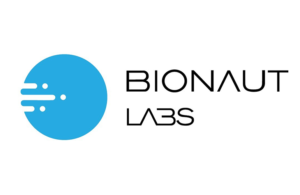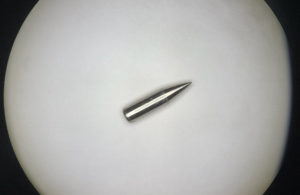 Los Angeles–based startup Bionaut Labs emerged from stealth mode earlier this year to announce its intent to use drug-filled microrobots to treat certain cancers.
Los Angeles–based startup Bionaut Labs emerged from stealth mode earlier this year to announce its intent to use drug-filled microrobots to treat certain cancers.
The company has now secured a humanitarian use device designation from FDA to use a microrobot known as BNL-201 to treat Dandy-Walker syndrome, a rare brain malformation.
In 1914, neurosurgeon Walter Dandy observed a toddler with a brain cyst that led to swelling in the back of the brain. In the 1940s, another neurosurgeon, Arthur Earl Walker, identified the same type of malformation, later dubbed Dandy-Walker syndrome. While the syndrome varies in severity, children with the condition may have developmental and movement disorders, vomiting or seizures.
Treatment options for the syndrome have been limited to shunt surgery, which has a significant rate of complications. A 2015 study found more than one-quarter of Dandy-Walker syndrome patients experienced complications, including infection, shunt fracture-dislocation and intracranial hemorrhage.

A Bionaut microrobot prototype [Image courtesy of Bionaut Labs]
While the company is developing a drug-device combination product to treat brainstem glioma, the BNL-201 device for Dandy-Walker relies on a “purely surgical approach,” Bionaut Labs CEO Michael Shpigelmacher said. “We wanted to keep it very simple.”
The BNL-101 microrobot used for glioma is also different from the BNL-201 microrobot used for Dandy-Walker syndrome. “The first was optimized to travel through dense brain tissue for delivery of the payload into the glioma,” Shpigelmacher said, while BNL-201 “is optimized for motion in cerebrospinal fluid for the treatment of Dandy-Walker.”
Still, the two microrobots share common components, including an external electromagnetic controller that drives the microrobot, software as well as insertion and retraction tools.

Bionaut Labs CEO Michael Shpigelmacher [Photo courtesy of Bionaut Labs]
Rather than injecting the Bionaut robot at the base of the spine, the company plans on deploying it in the upper cervical spine.
“We think that introduction to the lumbar spine is something that might be less invasive for some patients in the future, but we think that in this first indication that it is not required,” Shpigelmacher said.
“We go directly into the occipital lower-head area, we pivot the Bionaut, and we pierce the cyst to alleviate the pressure,” said Alex Kiselyov, chief science officer of Bionaut Labs.
The company anticipates that fenestrating the cyst will balance intracranial pressure within the head and normalize flow within the ventricle system of the brain.
“More importantly, we hope that anatomically and developmentally, in a matter of a few months, children will begin catching up,” Kiselyov said.

Bionaut Labs Chief Science Officer Alex Kiselyov [Photo courtesy of Bionaut Labs]
While Dandy-Walker syndrome is rare, “we believe that the population is in dire straits,” Kiselyov added.
Bionaut Labs has been in communication with the FDA regarding its technology for a few years.
“Originally, the plan was a larger indication of hydrocephalus, but then we decided that it makes sense for us to focus on a very specific manifestation of hydrocephalus,” Kiselyov said.
In terms of its investigational device for Dandy-Waker syndrome, FDA recommended Bionaut Labs “include specific guardrails to prevent off-label use,” Shpiegelmacher said. “The idea here is to work with the FDA to really build this platform in the safest possible way.”